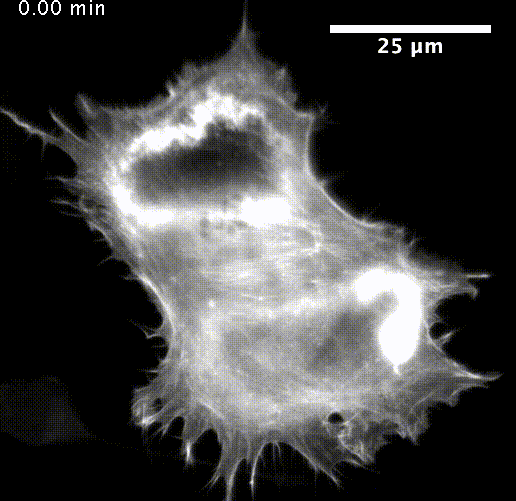Using a multidisciplinary approach, scientists disprove an old model and propose a new and more comprehensive framework for waves traveling across cells

Researchers from Ben-Gurion University of the Negev and the Weizmann Institute disprove an old model that explains how the polymerization mechanism of actin fibers in cells creates waves on the surface of the cell, and offer unique insights beyond the basic understanding of cell function that point to new strategies that could, in the end, be relevant to the detection and treatment of cancer .
Their research was published these days in Nature Communications, one of the three most important journals for multidisciplinary research like this, which combines mathematics, biophysics and experimental biology.
Actin fibers are one of the basic components of the soft and dynamic skeleton of cells and play an important role in remodeling cellular morphology and cellular motility. This phenomenon is related to the polymerization of actin fibers that cause folds in the cell membrane (therefore, waves in general) that are visible on the surface of the cell and inside it. This behavior is also known as macropinocytosis, where the cell produces membrane bubbles, which are absorbed into the cell at the end of the process. According to the new understandings, such circular waves have a dual purpose: to introduce large molecules (for example, nutrients) that the cell needs but cannot obtain through ion channels, and to "initialize" the cell's shape by destroying a structure that develops in the cell's infrastructure by actin polymerization, i.e. a mechanism Effective softening of the cell skeleton. The waves also center into the bubbles receptors from the cell surface, thus making it possible to detect many chemical signals and respond to them.
Until now, researchers believed that the mechanism that characterizes the movement of the waves resembles pulsations in space and time, similar to electrical pulses in the nervous system and the heart. Yet, Dr. Eric Yochelis (Ben Gurion University in the Negev), Prof. Nir Gov (Weizmann Institute) and their postdoctoral fellow Dr. Eric Burnit (from Germany) discovered after a re-examination of these waves, observed in the experiments, that the approximate mathematical description of the pulses is not appropriate. Instead, these membrane folds belong to a different, unique set of general and dynamic behaviors: wave fronts. A wavefront actually connects high and low concentrations of actin. The researchers built a model with general implications, which not only reproduces the behavior of the waves, but also qualitatively predicts new dynamic behaviors, which surprisingly were also found in the experiments. Therefore, their approach opens up new possibilities for many future applications, including applications in cancer research.
Previous studies in cancer research have implied that disruption of normal wave dynamics can promote cancerous phenotypes, similar to the dynamics observed in the current study. In addition to this, the understanding of macropinocytosis by waves, an important mechanism of nutrient absorption in growing cells and the recycling of receptors on the cell surface, can consequently help in understanding cancer cells.
"Now that we have a better understanding of these waves, if we can control their dynamics, in principle we can help prevent or discover paths towards cancer cells, while using and developing mechanisms that until now were not necessarily at the forefront", say Yoglis and Gov.
Dr. Eric Burnit was a guest at the Weizmann Institute for the joint research. Another researcher and author of the article is Prof. Hans-Gunther Dobreiner who was the supervisor of Dr. Eric Bernit for his PhD from the University of Bremen in Germany, in whose laboratory the experiments were carried out.
The research was supported by the Adelis Foundation, Israel's Ministry of National Infrastructure, Energy and Water and the German Scientist Exchange Service.
